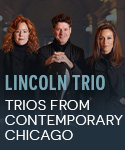Most of Vladimir Horowitz’s 1975-82 recordings for RCA Victor stem from live, edited performances. By contrast, this previously unissued November 16, 1975 Carnegie Hall concert (an event I was fortunate to attend) represents the great pianist in a complete, unspliced program, save for trimmed applause. The opening salvo, Schumann’s Blumenstück, is more garishly phrased than the pianist’s equally subjective reading nine years earlier (Sony). Listeners familiar with Horowitz’s dynamically charged and imaginatively wrought Schumann F minor sonata recorded and released by RCA in 1976 will find the present account similar in design if differing in detail. The first movement’s obsessive dotted chords, for example, are coiled to a tighter degree, while the Scherzo is leaner and more sharply accented. There’s marginally more sweep and lightness to the Finale’s knotty runs, even if tempo fluctuations are less adroitly negotiated.
While Rachmaninov’s G major Prelude intoxicates as much as in Horowitz’s later readings (RCA and DG), the pianist overbuilds the E-flat minor Étude-Tableau’s churning left-hand chords (better balanced in his 1962 CBS studio version). The two Liszt works also benefit from Horowitz’s tonal magic, even if his earlier RCA mono accounts are more crisply detailed. On the other hand, Chopin’s A minor Waltz absorbs Horowitz’s more spacious, rhetorical phrasing as well as the pianist’s relatively “straighter” past renditions.
The concert concludes with what I consider Horowitz’s finest performance of Chopin’s B minor Scherzo. He checks his mannerisms at the door and delivers the outer sections more directly and demonically than I’ve heard him do elsewhere. Even his notorious interlocking octaves in place of Chopin’s written scales in the final bars explode with inevitability rather than effect for effect’s sake. As for the encores, Horowitz played the Debussy Serenade and Schumann Träumerei more simply and effectively at his May 9, 1965 “Historic Return”. Next to the controlled power of Horowitz’s CBS Rachmaninov Op. 39 No. 9 Étude-Tableau, the orchestrally inspired textures have turned elephantine and bombastic (not helped by the overbrilliant, souped-up voicing of his Steinway). But Horowitz tosses off his signature Moszkowski encore to deft and humorous effect, and the audience eats it up.
Jon Samuels works sonic wonders with what apparently were problematic source tapes, and Harris Goldsmith’s succinct annotations add valuable musical and historic context to the concert at hand. And let’s encourage RCA to unearth more unpublished Horowitz: there’s some great material awaiting release! [6/30/2003]
































